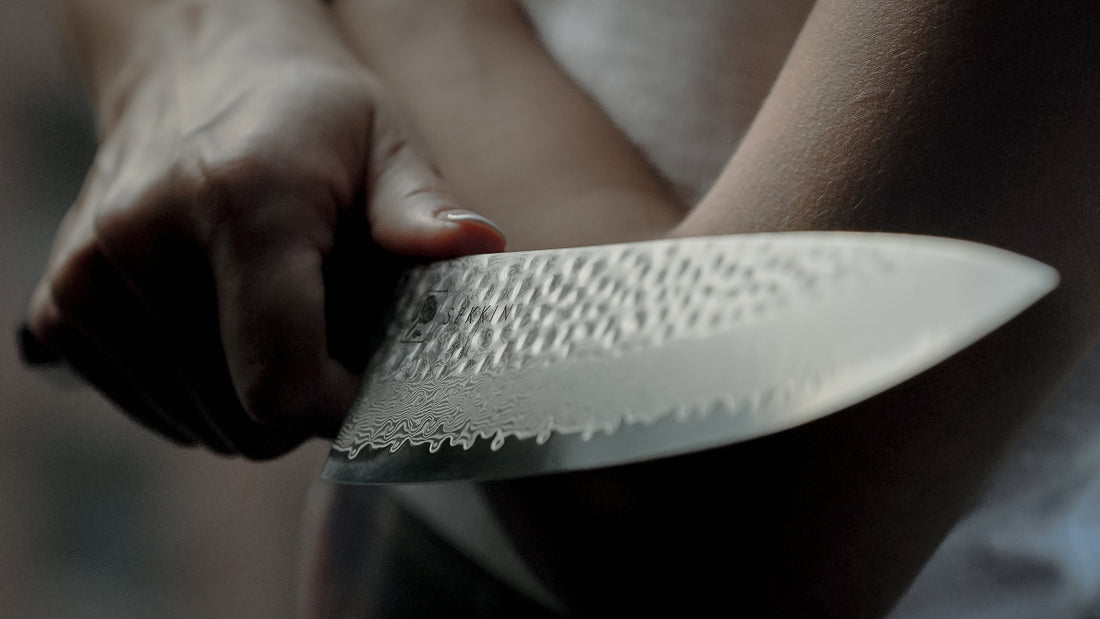
Knife Etiquette: Dos and Don'ts for Safe and Efficient Kitchen Use
Share
Knife etiquette isn’t just about formality—it’s about safety, efficiency, and respect in the kitchen. Whether you're prepping dinner for one or cooking for a crowd, good knife habits can make your kitchen safer and your cooking smoother. Here’s a quick guide to what to do—and what to avoid.
The Dos of Knife Etiquette
1. Choose the Right Knife for the Job
Use a chef’s knife for general chopping, a paring knife for peeling, and a serrated knife for bread. The right blade gives you more control—and better results.
2. Keep Knives Sharp
A sharp knife is a safe knife. Hone your blade regularly and sharpen it as needed to keep your cuts clean and your fingers safe.
3. Use a Cutting Board
Wood or plastic boards protect your counters and your knife edge. For stability, place a damp cloth or non-slip mat underneath.
4. Grip the Knife Properly
Use your dominant hand to grip the handle securely, placing your thumb and index finger near the blade's base. Use a claw grip on your guide hand to keep fingers out of harm’s way.
5. Clean and Store with Care
Hand-wash your knives, dry them immediately, and store them in a knife block, magnetic strip, or sheath to protect both the blade and your hands.
6. Practice Focused Cutting
Give your full attention when using a knife—especially when you're learning new techniques. Mindfulness in the kitchen matters.
The Don’ts of Knife Etiquette
1. Don’t Cut on Hard Surfaces
Avoid glass, granite, or ceramic. These surfaces dull your knife quickly. Stick to wood or plastic.
2. Don’t Leave Knives in the Sink
Hidden blades under soapy water = injuries waiting to happen. Clean them right away and put them back safely.
3. Don’t Use Knives for the Wrong Tasks
Don’t pry open cans, hack through bones, or chip frozen food with your everyday knives. Use the right tool to avoid damaging your blades.
4. Don’t Leave Knives Unattended
Be mindful of where your knives are at all times—especially in shared kitchens or around kids.
5. Don’t Test Food with the Blade
Never use your knife tip to poke food. It’s bad for the blade—and not food-safe. Use a thermometer or fork instead.
Master Knife Etiquette, Master Your Kitchen
Knife safety isn’t just a rule—it’s a mindset. Respect your tools, stay focused, and you’ll find more rhythm and confidence in your cooking.
At SEKKIN, we design knives that feel good in the hand and make every slice smooth, safe, and satisfying.
